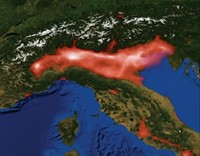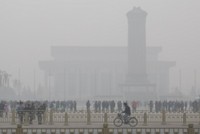Advertisement
Grab your lab coat. Let's get started
Welcome!
Welcome!
Create an account below to get 6 C&EN articles per month, receive newsletters and more - all free.
It seems this is your first time logging in online. Please enter the following information to continue.
As an ACS member you automatically get access to this site. All we need is few more details to create your reading experience.
Not you? Sign in with a different account.
Not you? Sign in with a different account.
ERROR 1
ERROR 1
ERROR 2
ERROR 2
ERROR 2
ERROR 2
ERROR 2
Password and Confirm password must match.
If you have an ACS member number, please enter it here so we can link this account to your membership. (optional)
ERROR 2
ACS values your privacy. By submitting your information, you are gaining access to C&EN and subscribing to our weekly newsletter. We use the information you provide to make your reading experience better, and we will never sell your data to third party members.
Infectious disease
There are environmental consequences to the COVID-19 pandemic
by Bibiana Campos-Seijo
May 30, 2020
| A version of this story appeared in
Volume 98, Issue 21
A few days after the US celebrated Memorial Day last week—a holiday dedicated to honoring military personnel who died while serving in the armed forces—the country reached a grim statistic: the number of deaths due to the COVID-19 pandemic in the country passed 100,000.
The number itself has no special significance other than it is a large round figure (it takes the death toll into 6 figures); it is so far the largest number of deaths due to COVID-19 by country, and it was reached in less than 4 months. By way of benchmark, the BBC reports that this is almost the same as the number of American servicemen and women killed in Korea, Vietnam, Iraq, and Afghanistan over 44 years of fighting.
There is no silver lining to this. Not really. Given the death toll, not one that is cause for celebration at least. But it should be noted that this outbreak and the near-global lockdown in response have had unintended consequences that happen to be beneficial, albeit temporarily. One of these consequences is the reduction in CO2 emissions.
C&EN has made this story and all of its coverage of the coronavirus epidemic freely available during the outbreak to keep the public informed. To support our journalism, become a member of ACS or sign up for C&EN's weekly newsletter.
As governments around the world implemented policies that required people to stay home, it effectively forced offices, factories, and retail shops to close; limited commuting to essential workers; and drastically curbed air travel. As a consequence, emissions dropped.
At its lowest point in early April, global daily CO2 emissions were down 17%. But of course this decline will not persist for the remainder of 2020: as activities resume and energy consumption rebounds, it is estimated that daily CO2 emissions will decrease by only 4% for the year.
A recent article in Nature notes that global CO2 emissions have so far decreased by over 8%—for perspective, roughly three times Italy’s annual emissions. In real numbers this means that “carbon emissions fell by more than one billion tonnes in the first four months of the year compared with the same period in 2019.”
It is not surprising that the country showing the largest impact on global CO2 emissions is China—it is the largest emitter, after all—where the decline during the study period is estimated at about 315 million metric tons, roughly equivalent to the annual carbon emissions of France, according to the Nature article.
And it looks as if 2020 will be a good year not just for reductions in global CO2 emissions but, according to data from the US Energy Information Administration, for US renewables. So much so that the nation is on track for the first time to produce more electricity from renewables than from coal. As electricity consumption has decreased during the pandemic and “coal plants often cost more to operate than gas plants or renewables, many utilities are cutting back on coal power first in response,” the New York Times reported in May.
It is my hope that some of this decrease in emissions and shift to renewables will “stick.” In addition to being good for the environment, it would help save lives. CO2 isn’t the only combustion by-product emitted by cars, power plants, and industrial facilities. The nitrogen dioxide they produce is also harmful to human health—it inflames the lining of the lungs—and reacts to form unhealthy ozone and particulate matter. Its presence leads to worsened cough and wheezing, reduced lung function, increased asthma attacks, and greater likelihood of hospital admissions. With strict lockdowns in place, its production and release into the environment has also dropped. In fact, a sharp decline in ground-level NO2 air pollution has been reported in Italy and China, two countries significantly affected by the outbreak. Respiratory diseases are the leading cause of death and disability in the world. Again, this is no silver lining but another likely unintended consequence of the pandemic that is beneficial.
Views expressed on this page are those of the author and not necessarily those of ACS.





Join the conversation
Contact the reporter
Submit a Letter to the Editor for publication
Engage with us on Twitter